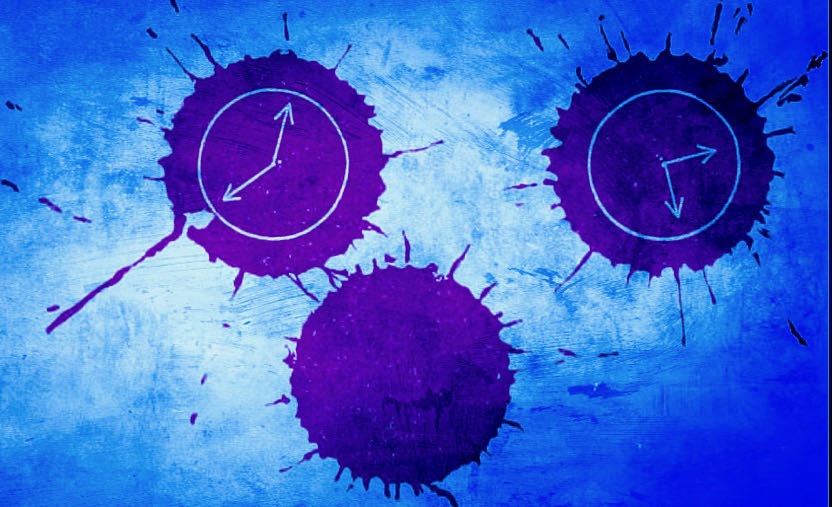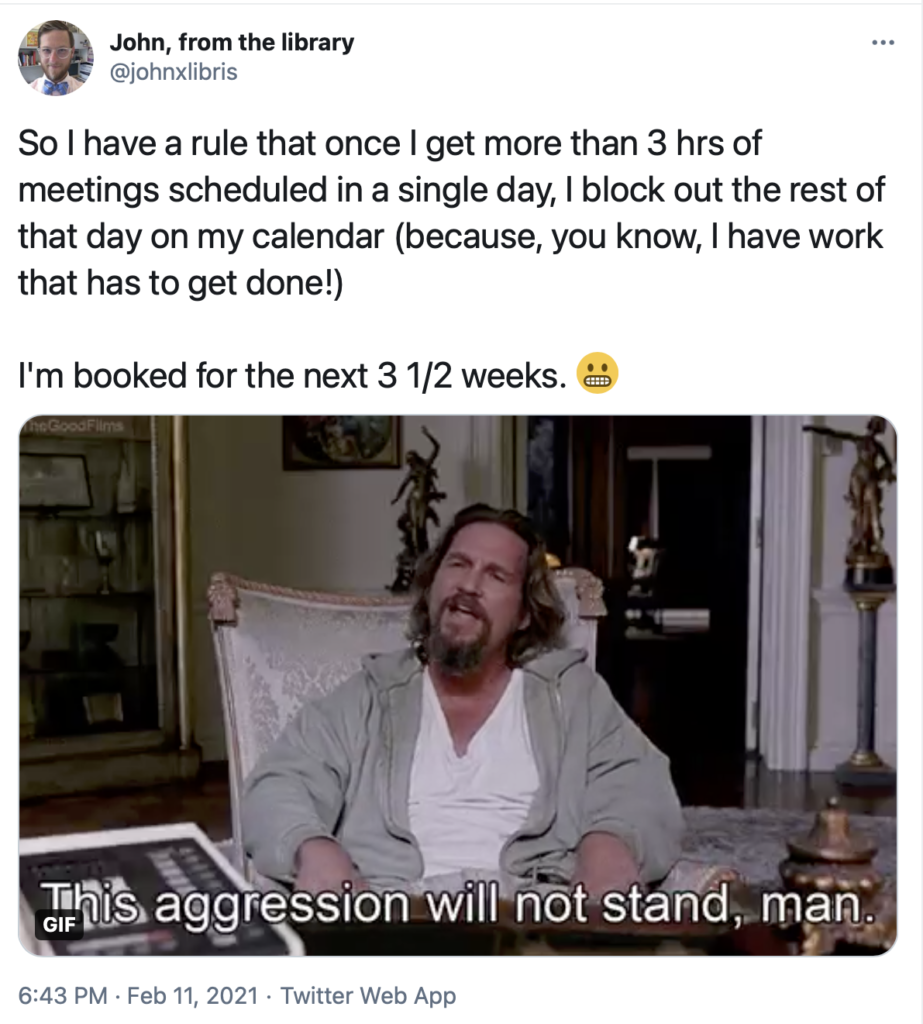Recently, a colleague asked me about my daily time management practices. Having had this same conversation a few times already with others, I finally set myself to drafting a “readme” file for my communication and calendaring habits. This doesn’t include all the minutiae of my weekly productivity workflows, but it’s a top-level summary that (I hope) gives just enough detail to help my team understand why (1) my calendar is so booked and (2) why I don’t always respond to email or DMs right away.
My practices are built on the ideas of Cal Newport, Celeste Headlee, and David Allen, all of whom recommend intentional, process- and outcomes-focused modes of work.
Caveat: The following habits won’t work for everyone. It works for me, in my current position, with my current team and projects, etc. I offer it as an example of what one possible readme statement looks like.
How I communicate
Rationale: As much as possible, I try to reduce the need for unstructured, asynchronous communication in my work (what Newport calls the hyperactive hive-mind) and limit the amount of time I spend context-switching between tasks. Studies consistently show that long periods of focused, uninterrupted work produce higher-quality output and reduce the danger of creative fatigue and burnout.
Practice: I set aside 30 minutes each day to process my email inbox. Additionally, I set aside 1 hour each day for drop-in conversations (in-person or online): this time functions like office hours and are first-come first served. I do not keep my email or chat clients open when I am working on a project and my device notifications (except from the Library Administration team, my partner, and my parents) are muted, so don’t use email if you need an immediate response.
What you can do: If your request is not time-sensitive, email me and I will respond to it usually within 2-3 business days. If you would prefer, but don’t necessarily need, a quicker response, send me a message on Teams and I will likely respond within 1-2 business days. If you need a response day-of, stop by or DM me during my office hours (usually MWF 2-3p and TR 1-2p). My Outlook calendar is up-to-date and openly readable.
But what if you’re not available? Then you wait. Unless of course you have a way to create more time in the day. =)
How I schedule my week
Rationale: After working as an academic librarian professionally for almost a decade, I have developed a fairly accurate sense of exactly how much time I need to do various tasks that my job requires of me. For example, I know I can stay on top of my collection development work by dedicating 1.5 hours a week to the task. With this knowledge, I schedule my work week in advance using a “time-blocking” method, thus making sure I have adequate time to accomplish as much as possible within the time allotted to me (i.e., time that isn’t set aside for a meeting) each week.
Practice: At the end of each week, I review my tasks, projects, and annual goals and use them to map out the following week. Every hour of the day is given an assignment, with preference for longer periods of concentrated work (e.g., usually 1.5 hr blocks). In order to make time for focused work, I limit the amount of time I spend in-meetings each day to 3 hours. The first 30 min of each day is dedicated to checking in with my team and reviewing our essential tasks for that day. Additionally, because I often work 9-10 hour days, I schedule longer lunch breaks (1.5 hours max). I do not schedule meetings during that time and use that time to step away and recharge.
What you can do: As noted above, I try to leave 1 hour every day unscheduled as an office hour. Feel free to drop in in-person or virtually during that time. If you want to request a time on my calendar, you can schedule a time with me using Microsoft Bookings (external colleagues) or Outlook (internal colleagues).
But what if you don’t have any free time? It is true that I keep a lot of plates in the air at all times. This often means my calendar is booked for weeks at a time. However, if you send me an email requesting a time to meet (please send me 2-3 available times), I will try to move things around.
The criticism I usually receive about this style of working is that it is “closed door” (as opposed to “open door,” whatever that means*). Yes, it is true that I do more than most people to make myself unavailable to others. My current job requires sustained periods of concentrated work: to write long-form narratives, design graphics, plan out project timelines, run data analyses in spreadsheets, and proof materials. So much proofing. If I am frequently interrupted during these activities, I risk making critical mistakes that are costly to reverse.
All of us have alternating periods of “available” and “not-available” throughout the day. When I am in a meeting with my dean, it’s simple: I’m not available to answer a phone call. If I’m attending a speaker event on campus, I’m not responding to email. If I’m recording a video tutorial, I need to make sure no one knocks on my door! The question we sometimes fail to ask is: are there other moments when I should consider myself to be unavailable? Ones which, though the surrounding external friction/barriers are weaker, still merit an intentional “attention block” from outside influences? How would the quality of my work and, more importantly, the quality of my experience improve with less context-switching and fewer interruptions?
Just because you don’t have a meeting on your Outlook calendar does not mean you are “available.”
Nonetheless, I make a point to always set aside some time each day for drop-in conversations. During those office hour blocks, I don’t schedule any essential work: my only goal is to be open and available to others. If no one needs to chat, I will often use that time to follow up on requests sent via email. My office hours could alternatively be called my “synchronous communication hours.”
Is this convenient to everyone? No, but it provides an intentional space for things that need day-of input (and, in my experience, most things in academia don’t need day-of input… it’s just nice). I can’t offer you all of my time, but what I can offer, I can offer consistently.
*A note about “open door” practices: For me, having an open door management style is not synonymous with literally having your office door open or (in the case of not having a physical door) being always amenable to interruptions. Instead, my open door management style focuses more on whether I am providing consistent and frequent opportunities for team input, whether I am actively listening to that input, and whether I am able to take what I learn from that input and translate it into meaningful ways to support my team. And sometimes, the best way I can support my team is by closing my door and getting shit done.


